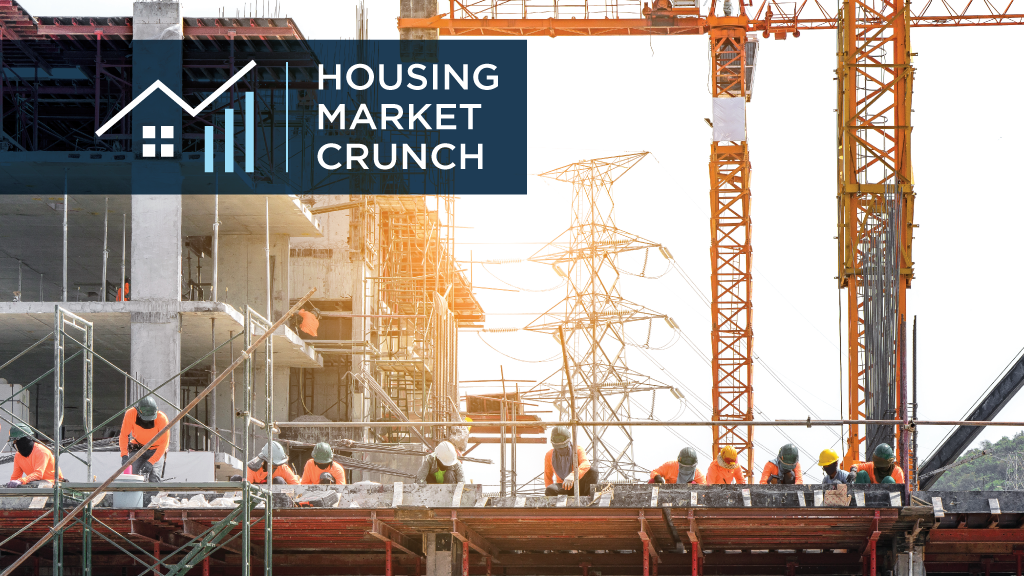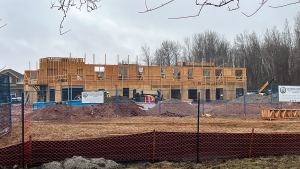Funds flowing to accelerate construction of affordable and rental housing could be the iceberg or it could be a lifeboat.
It all depends on when those funds translate into caissons and concrete as highrise forms get poured and earth gets moved.
As it stands, there’s a slowdown in housing starts and construction across the GTA as higher interest rates spook buyers and force developers into survival mode.
Worse, more than 40 projects with 14,000 units have been cancelled or put on hold as those sales staff and costs rise.
How long that pent up demand will remain dormant is anyone’s guess, but the betting is it will break out as interest rates soften along with signals from the Bank of Canada it is easing back with inflation under control.
And that could happen just around the time the Housing Accelerator Fund (HAF) projects get going, leading to competition for skilled labour and materials, which inevitably drives the cost of both up.
It’s a quandary for analysts and planners since there are many variables at play.
BuildForce Canada released its Residential Scenario Outlook 2024 to 2033 report and notes to meet the target of 3.9 million new homes across Canada this decade a massive ramp up of construction labour will be needed.
The report says the demand will need about 83 per cent more construction workers, some 1.04 million above 2023 levels.
Then there’s all that money for infrastructure such as roads and sewers and water supply to support new housing developments and that will require 19 per cent more workers.
Bill Ferreira, executive director of BuildForce Canada, says the challenge will be to find those workers to push housing starts up 149 per cent over the 200,000 average units built every year.
Quebec, Ontario, and British Columbia will be most impacted, the report notes, demanding a doubling for their construction labour force.
Meeting that demand is a challenge itself, before taking into account the need for land, infrastructure and materials or even mechanicals like HVAC systems.
“We need to reach and recruit groups who are underrepresented in construction, where there has been no interest,” says Ferreira. “Indigenous, women, newcomers. We need to work directly with organizations involved in settlement, ensuring they are aware of the opportunities in construction and create a path to entry.”
Unions and colleges training apprentices need support. Some of that exists already, with programs such as the federal Apprenticeship Service for new first-year apprentices in 39 Red Seal trades.
“What we can also do is ensure the immigrants coming have the skills we need,” he says. “But we don’t want a glut so that in 10 years there are more construction workers than jobs.”
Tridel president Jim Ritchie says they are taking the long view with 10 to 20 year horizons, but are keenly aware of how externalities like the Ukraine invasion or COVID-19 can upset the best of projections.
He’s hoping as construction ramps up across southern Ontario and the GTA it will offset the slowdown which is underway and will take some time to turn around.
Richard Lyall, president of the Residential Construction Council of Ontario, says of all the immigrants to Canada last year only 425 were skilled tradespeople.
“They have to change the scoring system,” he says.
Meanwhile, he says, sales are soft when we need to double housing starts.
“Sales have been falling for a while and we see a slow down in new housing starts this spring, summer and fall,” he says. “However, there are a lot of projects in the highrises pipe and competition, which have been in development for two to five years, so things will still remain busy for a while.”
Construction is critical for the economy, so keeping it on an even keel is in everyone’s interest.
“Construction is a $150 to $160 billion industry with a total value of $1.4 trillion in North America,” Lyall says. “But there are structural problems, because you can’t build for first time buyers and the middle class when basic taxes and fees and levies increase constantly and are 31 per cent higher than cities like Chicago. In Dallas they are building like crazy and you can buy for US$200,000. It’s not a functioning marketplace.”









Recent Comments